Gallery Network
7 Questions for Dealer Massimo De Carlo, Who Revels in Change and Going Against the Grain
The gallery has recently added Jenna Gribbon, Shannon Cartier Lucy, Jean-Marie Appriou, and Ludovic Nkoth to its roster.
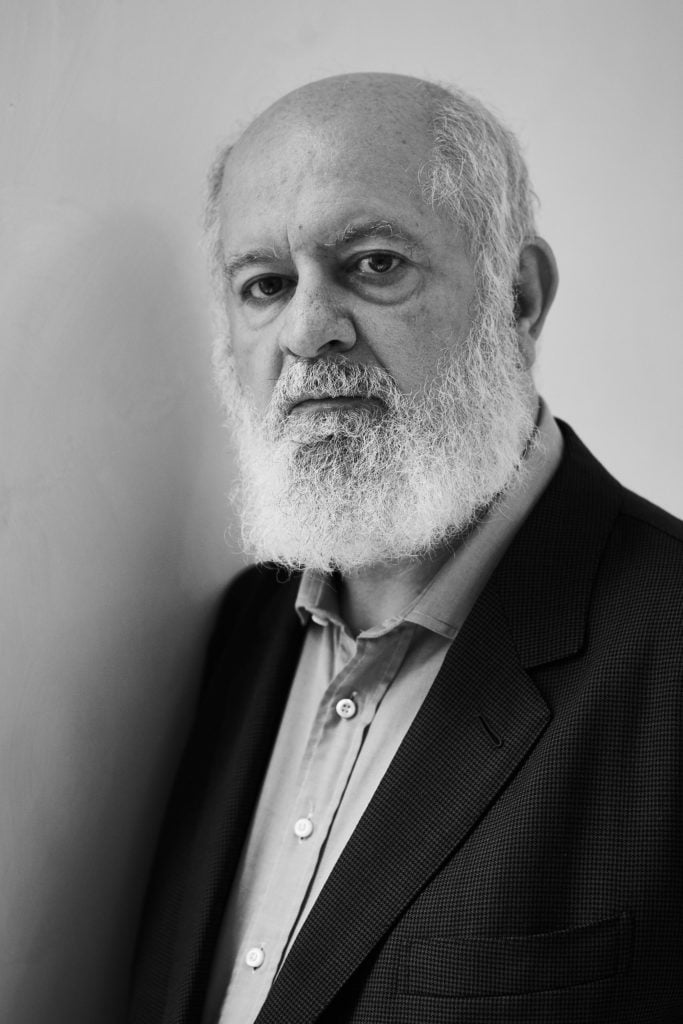
The gallery has recently added Jenna Gribbon, Shannon Cartier Lucy, Jean-Marie Appriou, and Ludovic Nkoth to its roster.

Artnet Gallery Network

With four locations spread across Milan, London, and Hong Kong, Massimo De Carlo gallery found it hard to escape pandemic tumult over the past two years. After a bit of cautious maneuvering, however, the gallery—which de Carlo founded in Milan in 1987—has found solid footing, recently adding a number of sought-after figurative artists to the roster, including Jenna Gribbon, Shannon Cartier Lucy, Jean-Marie Appriou, and Ludovic Nkoth, whose exhibition “Transferred Memories (Work No Dey)” currently fills its London space. The gallery is also expanding to a permanent footprint in Beijing and relocating to new gallery spaces in London and Hong Kong.
Recently we sat down with gallery founder Massimo De Carlo to talk about the vogue for figurative art, his relationship with Maurizio Cattelan, and the artist he calls the “cantor of the apocalypse.”
The gallery now has an exhibition of works on view by Ludovic Nkoth, a Cameroonian artist who paints powerful portraits, often of his family members. Can you tell me how you first came across his work, why you think it’s important, and what people need to know about the show?
New discoveries are the core of the gallery’s activity. The most powerful gesture a gallerist can make is to decide to represent an artist. It is a high form of mutual trust and respect. I am proud to have represented artists for a very long time, in some cases 30 years—but you need to start somewhere, so I am interested to begin a new adventure with Ludovic Nkoth, who’s a very talented painter and a brilliant narrator of the life in Cameroon and beyond. His work is distinguished by fluid expressivity rooted in his personal life and investigation of identity through African history and its diaspora pre- and post-colonialism. His poetics match some of the general interests of my gallery program, such as investigating societies and cultures, always focusing on human beings and their relationships with the world. The exhibition we just opened in London is a great example of this attitude: Nkoth has focused on his hometown and imagined what would his life be like if he had stayed, instead of moving to New York City. It is a very powerful, intimate and yet universal point of view on the economy and politics of today.
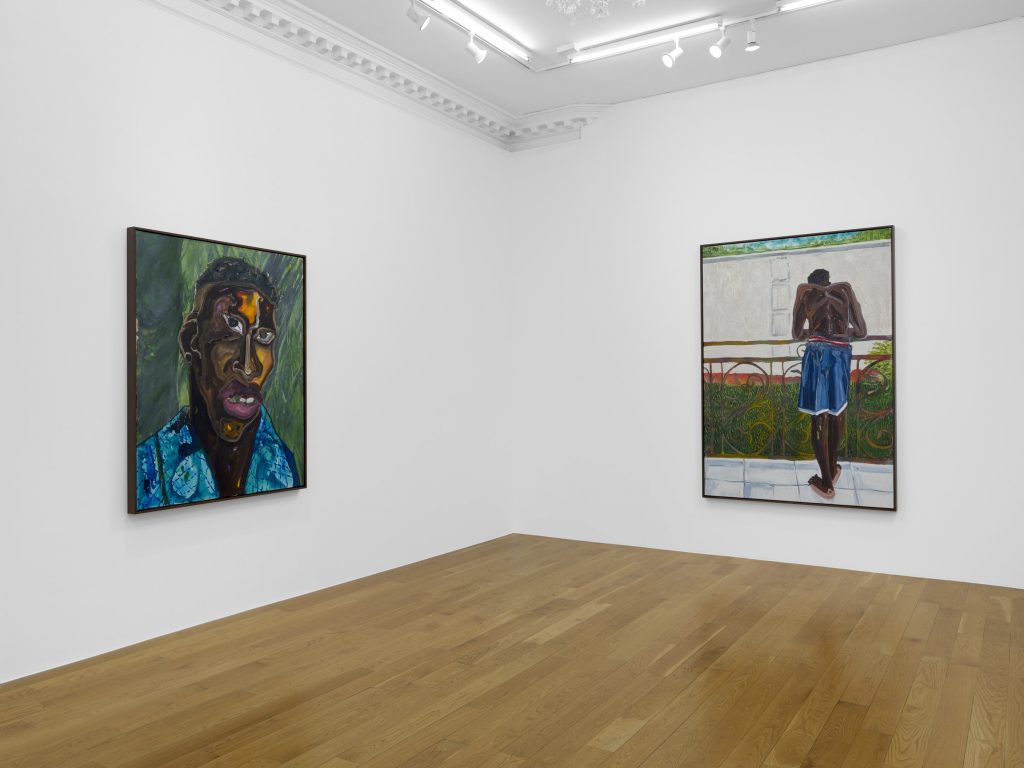
Installation view, “Ludovic Nkoth: Transferred Memories (Work No Dey),” 2022. Courtesy of Massimo De Carlo.
Aside from Nkoth, the gallery has added several artists to the roster recently, including Shannon Cartier Lucy, Jean-Marie Appriou, and Jenna Gribbon. How do these artists fit with the gallery’s mission, and do you have exhibitions scheduled for them?
It is often through artists that we encounter other artists. The artist community is very tight and fervid, and therefore it becomes a great source of inspiration to discover the new. We are always hunting for new voices of contemporaneity, and these artists’ practices are powerful and relevant for the time we’re living, and I believe we have a long future together. Their paintings and sculptures have touched me with their intimacy: these artists are all open to revealing much of their personal experience on canvas (or in sculptural materials). In a world that is more and more concerned with micro-celebrities, influencers, and so forth, it feels to me that these artists’ works are a response, almost an emergency call, for a different approach to humanity. We’re soon to open our first solo exhibition in Milan (her second with the gallery) with Shannon Cartier Lucy in May, and with Jessie Homer French in December. Also in London, we’re opening a solo exhibition with Jean-Marie Appriou in October that will also mark the relocation of the gallery. That’s all happening this year.
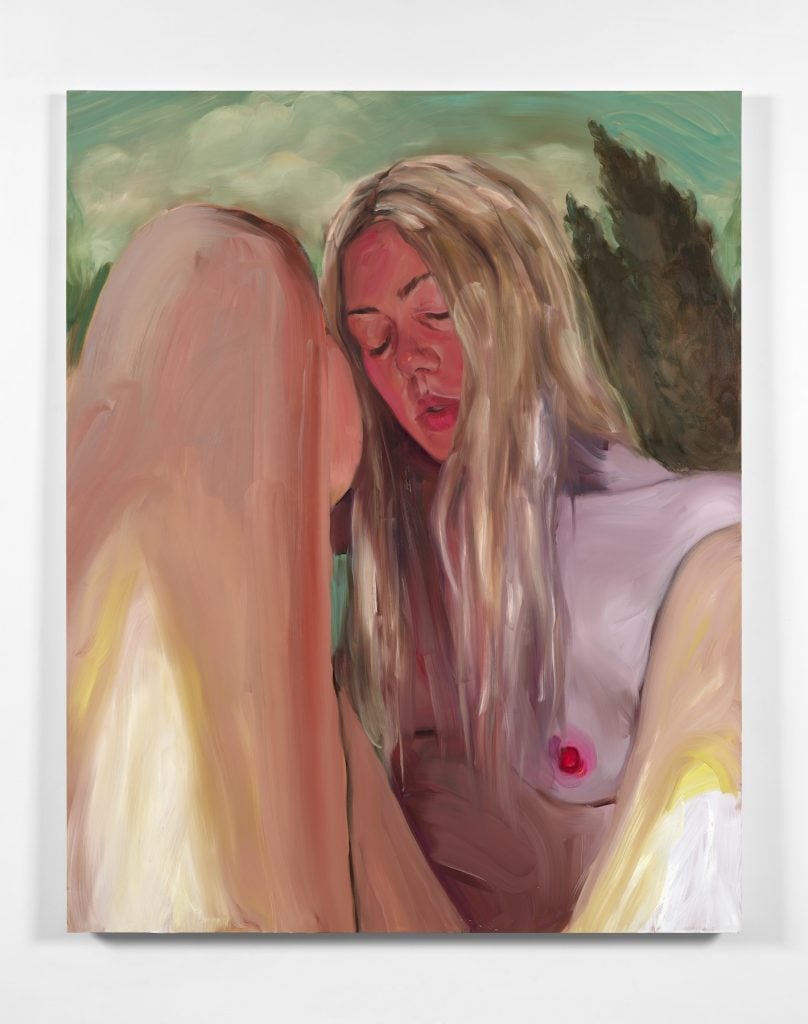
Jenna Gribbon, Acid Rococo Tenderscape (2021). Photo: Todd-White Art Photography. Courtesy of the artist, Massimo De Carlo, and Fredericks & Freiser, New York.
Appriou’s works are a bit more lyrical and fantastical than the others’ works. Can you tell me a bit more about these?
Jean-Marie Appriou is a cantor of the apocalypse. He’s able to envision nature after nature, humans after humans, animals after animals. His continuous reference to mythology, archaeology, and Pre-Raphaelite paintings intertwines with sci-fi literature, cinema, and comics, making his sculptures a new icon of the mixed culture we are experiencing and will envision for the future. As a self-taught artist, his research is admirable: he manipulates traditional materials, including bronze, ceramic, and glass, adopting an experimental, do-it-yourself method that allows him to cultivate an intimate relationship with the materials. His personal alphabet is very intriguing, and I look forward to accompanying its development.
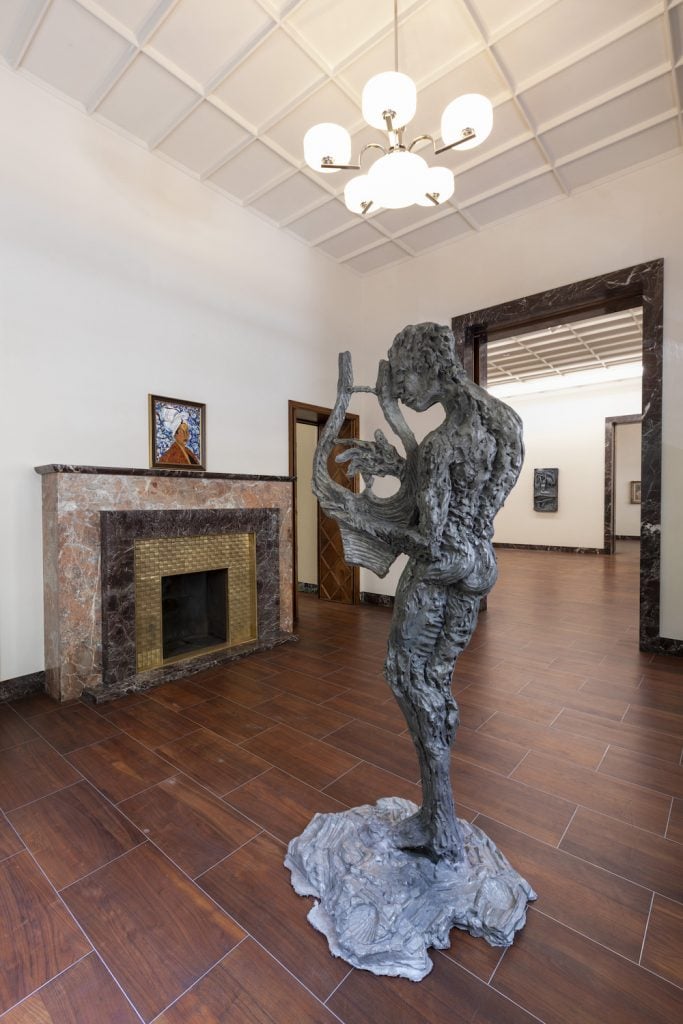
Installation view, “Jean Marie Appriou: Portraiture One Century,” 2021. Photo: Roberto Marossi. Courtesy of Massimo De Carlo.
These artists are all figurative. Is that just a coincidence?
There’s certainly new attention towards figuration, probably brought in by the approach everyone could have with a recognizable image. But art often becomes popular in waves—more abstraction in one decade, more figuration in the next, found materials for a certain period of time, and then technology…It is a human impulse to congregate around a few names and a few languages. For me and the gallery, it is a natural evolution of our program, which has always reflected on the relationship between art and the world and encompasses great voices inside and outside figuration. In fact, this summer, I will present a reflection on abstract art at our gallery in Milan, which will work as a counterpoint to the current mainstream taste. This is classic for my history, which has embraced artists of diverse backgrounds and poetics; for instance, Rudolf Stingel and Yan Pei-Ming, just to mention two great masters.
The gallery recently received a lot of press for the Maurizio Cattelan exhibition you mounted during Milan Art Week. The installation included a controversial sculpture that depicted an effigy of Cattelan hung in the gallery’s bathroom. Can you tell me about the show and its reception?
I’ve worked with Maurizio for many, many years, supporting his work at every stage of his career. I am proud to be able to show such an important work by Cattelan at the gallery—especially in the unusual space of the master private bathroom, designed in green marble by Piero Portaluppi. YOU is an ambiguous figure, a vision onto which anyone could project his or her own meanings, as it reflects upon fundamental human instincts, such as fear and joy, compassion and anger, affection and defeat. The reception was beyond expectations, and the flow of people wanting to have a direct experience with the work was heartening—because art needs to be experienced in person, we must never forget. Paradoxically, this installation received great exposure on social media, even though it was banned immediately by Instagram—so you can only find details of it, not the complete image on the platform. In 2004 Cattelan produced a public installation with the Trussardi Foundation that was vandalized by a man and became iconic, even though very few could actually see it. Almost 20 years later Instagram takes that role, but in reverse: you can see the work live, but not online.
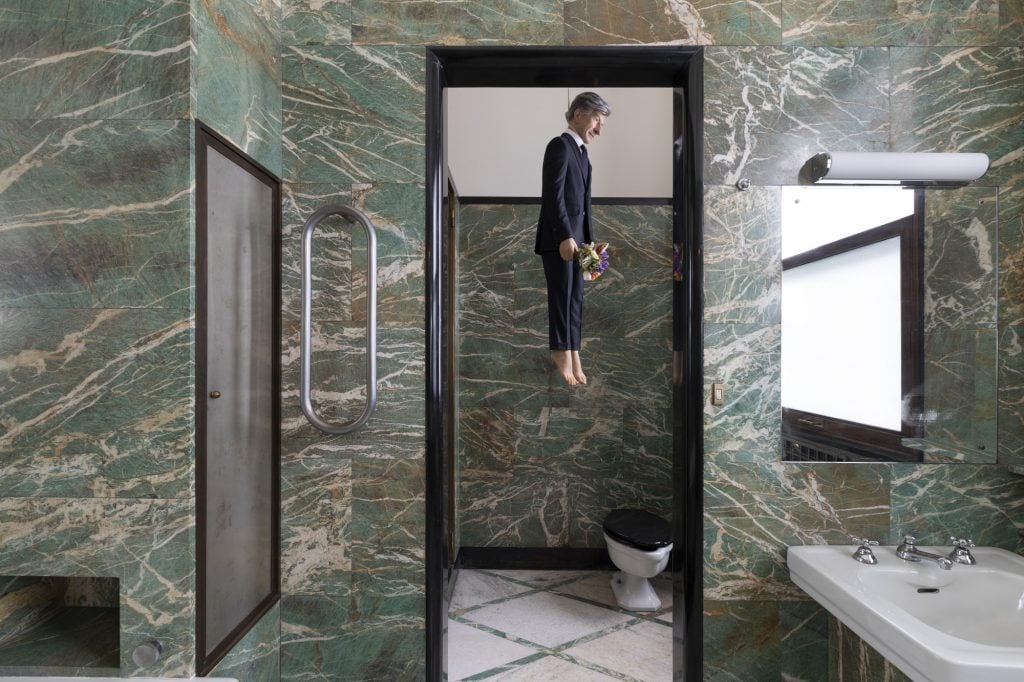
Maurizio Cattelan, YOU (2022). Photo: Roberto Marossi. Courtesy of the artist and Massimo De Carlo.
What is on the horizon for the gallery?
This is an important year for the gallery; as the world reopens, we’re ready to make an impact. We’re still suffering in Asia from the various lockdowns, and the complications of travel and shipping, but nevertheless, we’re confident this will be an important season for us. We’re currently working on two important relocations: the Hong Kong gallery is leaving the Pedder Building to reopen in the Tai Kwun complex in early May with a show by Sanford Biggers, while the London gallery will relocate to a new jewel-box of a space in Mayfair in October. We’re transitioning our pop-up gallery in Beijing into a permanent space, and we’re also working on VSpace 2.0, a redefinition of our virtual gallery space. I’ve always considered it fundamental for the gallery to be able to challenge our artists and to offer them new modes of expression. That’s why change is always a priority for me, especially when it comes to exhibition spaces that have seen many years of activity and might feel repetitive for them. I am fighting a tough battle against white cubes by selecting spaces that are rich in history and have complex architectures: this vision is more empowering and inspirational for our artists, I feel.